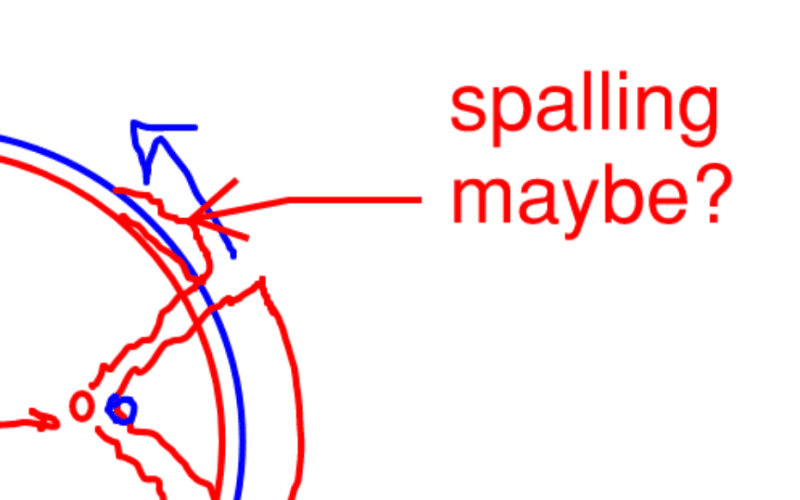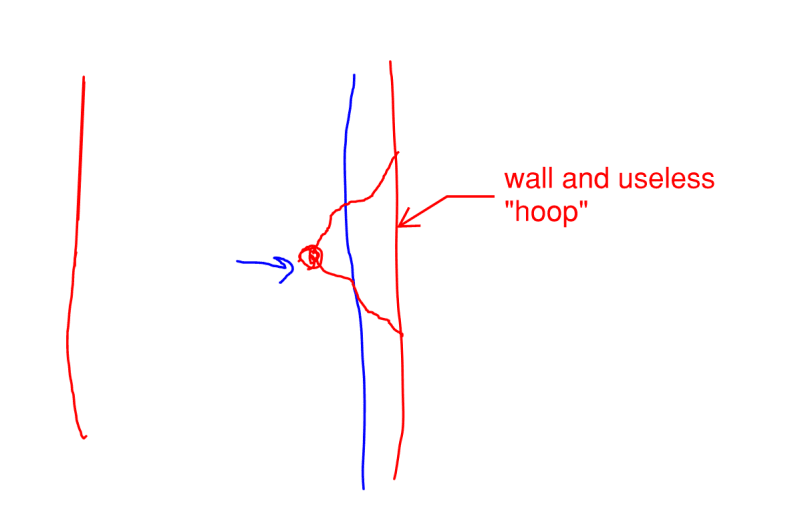I had an interesting call today and I am looking for some help and opinions.
Background:
This is in regard to the construction of a substation, so lots of cantilever columns with 4+ anchor rods. These structures are installed without any grout under the baseplate, instead they are installed with the baseplate clamped between a lower leveling nut and the upper nut, with no more than two anchor diameters space between the top of concrete and the bottom of the base plate. The foundation reactions range from 2 kips of shear and about 10 kip-ft of moment to 50 kips of shear and 2500kip-ft of moment. Foundations are drilled piers that range from 2ft diameter (lower loads) to 8ft in diameter (higher loads).
Issue:
Apparently when the contractor installed the rebar cages for the drilled piers they were allowed to drop to the bottom of the drilled piers, so where the first hoop should only be 2" below the top of the concrete it is instead anywhere from 1ft to ??? below the top of the concrete (they have started scanning as well as drilling holes to locate the rebar for each pier). They are now looking for a way to remedy this issue.
My thoughts:
Most if not all of the anchors are pretty long (minimum of 25x anchor diameter embed depth and more in most cases), I haven't run any numbers yet but I'm thinking tension capacity of the anchors will be less of an issue (still plenty of lap with the vertical rebar) and the shear will be more of an issue. So, the first thing to do will be to check anchor capacities as if there is no reinforcing and if it checks out for some of the structures, probably no further action will need to be taken. For the structures/anchors that don't check out, my first thought was to reinforce the top of the piers with CFRP. The problem is, I don't have any experience with that.
What do you guys think? Is CFRP a valid solution? What other ideas or solutions do you have? Has anyone ever run into this before?
If CFRP is a good solution, can anyone give me any pointers/background on how that is typically coordinated - is this a specialty design that the provider/installer performs or would they be looking to me for design info?
Thanks!
Background:
This is in regard to the construction of a substation, so lots of cantilever columns with 4+ anchor rods. These structures are installed without any grout under the baseplate, instead they are installed with the baseplate clamped between a lower leveling nut and the upper nut, with no more than two anchor diameters space between the top of concrete and the bottom of the base plate. The foundation reactions range from 2 kips of shear and about 10 kip-ft of moment to 50 kips of shear and 2500kip-ft of moment. Foundations are drilled piers that range from 2ft diameter (lower loads) to 8ft in diameter (higher loads).
Issue:
Apparently when the contractor installed the rebar cages for the drilled piers they were allowed to drop to the bottom of the drilled piers, so where the first hoop should only be 2" below the top of the concrete it is instead anywhere from 1ft to ??? below the top of the concrete (they have started scanning as well as drilling holes to locate the rebar for each pier). They are now looking for a way to remedy this issue.
My thoughts:
Most if not all of the anchors are pretty long (minimum of 25x anchor diameter embed depth and more in most cases), I haven't run any numbers yet but I'm thinking tension capacity of the anchors will be less of an issue (still plenty of lap with the vertical rebar) and the shear will be more of an issue. So, the first thing to do will be to check anchor capacities as if there is no reinforcing and if it checks out for some of the structures, probably no further action will need to be taken. For the structures/anchors that don't check out, my first thought was to reinforce the top of the piers with CFRP. The problem is, I don't have any experience with that.
What do you guys think? Is CFRP a valid solution? What other ideas or solutions do you have? Has anyone ever run into this before?
If CFRP is a good solution, can anyone give me any pointers/background on how that is typically coordinated - is this a specialty design that the provider/installer performs or would they be looking to me for design info?
Thanks!



